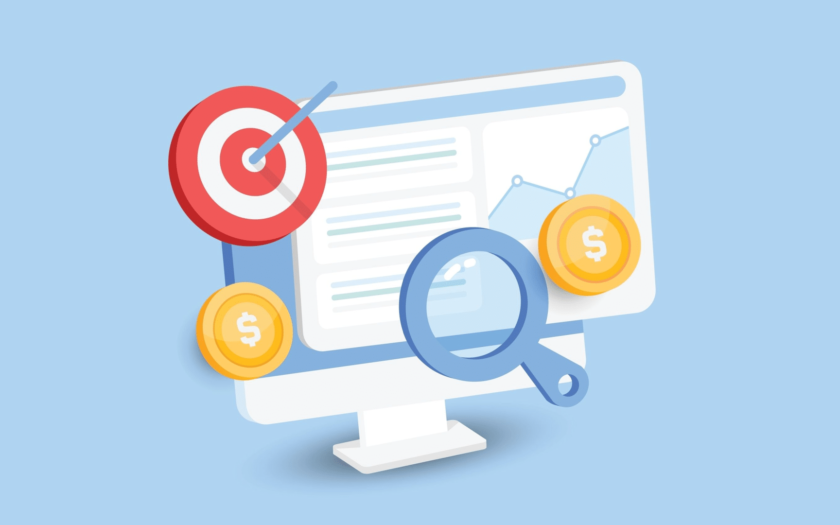When it comes to PPC, success depends on more than just launching campaigns — it’s about understanding and analyzing the right performance metrics.
By knowing which data points to focus on and how to interpret them, you can make informed decisions that drive better results and align with your business goals.
This article breaks down the key metrics you need to monitor, from basic to advanced, and shows you how to use them to measure and improve your PPC performance.
How PPC transformed advertising analytics
When digital advertising first emerged, one of its most exciting features was its ability to offer precise data measurement, something traditional marketing lacked. With PPC, you could track everything:
How many people visited your website.
How many viewed or clicked your ad.
Even the specific search terms they used to find it.
This was revolutionary, giving advertisers unprecedented insights into their audience’s behavior.
Beyond basic metrics, PPC also introduced conversion tracking, allowing advertisers to see the exact ROI for each ad. Compared to traditional advertising or early banner ads, this level of reporting and attribution was a game-changer.
PPC didn’t just offer data — it allowed for deep dives into ad performance, audience profiling and the customer journey in ways never seen before.
Advertisers could spot trends early, forecast with greater accuracy and gain valuable insights into their competition. Like AI today, PPC disrupted the industry, forcing marketers to adapt to this new data-driven landscape.
However, just having access to all this data isn’t enough. Success depends on understanding and interpreting it effectively. It’s not just about having the information but knowing what to look for and why.
Like the Three-Eyed Raven in “Game of Thrones,” possessing all the knowledge in the world is useless without the context and skill to interpret it. Only then can you turn insights into meaningful, actionable strategies. (If you’re not a GOT fan, thanks for sticking with me!)
Reporting
Context is crucial, as it often ties back to the core business and account objectives.
Weekly, monthly and quarterly reporting of PPC data should align with each client’s goals. While this may seem obvious, it is not always practiced.
The term “performance metrics” can vary significantly among clients, making it essential to establish a reporting structure tailored to different stakeholders.
This ensures you have the analytical foundation needed to meet client expectations, whether through a reporting template from platforms like Swydo or Report Garden.
Personally, I prefer a real-time Looker Studio performance dashboard (or other real-time dashboards), where clients can adjust date ranges and access their own reporting without waiting for specific intervals.
This approach provides immediate insights and allows for the integration of data from various platforms beyond PPC, such as Shopify, Magento, WooCommerce and GA4.
By doing so, you can create a more comprehensive view that offers deeper context beyond just advertising performance.
Dig deeper: 3 steps for effective PPC reporting and analysis
Fundamental PPC metrics
Before diving into advanced metrics, it’s essential to first consider the bread-and-butter metrics. These are the primary data points you review during your daily checks and serve as the foundation for any performance analysis.
Many clients prioritize (and some may even dwell on) these metrics because they are easily understood and have more in common with traditional metrics than the more advanced data. Additionally, these fundamental metrics will serve as the basis for the advanced metrics you examine later.
A quick sample of fundamental metrics would include:
Impressions: The amount of people who have viewed your ads.
Clicks: The amount of people that have clicked on your ad.
Average cost per click (CPC): Cost divided by clicks.
Click-through rate (CTR): Clicks divided by impressions.
Unique sessions: Amount of users who have been on your website.
Conversion value: The amount of revenue generated from a sale.
The above metrics often serve as the foundation for most basic PPC reports I’ve encountered.
Google typically provides these metrics natively, with only minimal coding needed to enable conversion tracking for conversion value. I still consider this fundamental as it is essential for analyzing performance.
Your advertising objective should focus on improving the click-through rate of your ads and making them more engaging to enhance campaign efficiency.
This, in turn, can increase the number of impressions and clicks, allowing you to scale performance.
Also, aim to decrease the average CPC, which theoretically enables you to generate more traffic for your spending, particularly when stepping up with display ads.
They serve a purpose and need to be the first point of analysis, especially in identifying campaign disruptions. Some examples would include:
Clicks are down 75% day on day on Performance Max ads? Feed issues.
Clicks are up 100% day on day on Performance Max ads? Spike in Display channel distribution.
Average CPC up 25% in brand campaign month on month? A couple of new competitors in the market bidding on your brand keywords.
CTR down 20% month on month? Those new keywords aren’t relevant enough.
Ultimately, though, all the fundamental metrics won’t be enough to analyze independently if your priority objectives are being met.
Just remember that the next time a client questions why clicks are down 10% year on year or why CTR is down 15%, they need to focus on the fact that POAS is up 25% and LTV is up 15%.
These metrics are directly related to the business objectives, such as becoming more efficient with advertising spend in a year characterized by tougher market conditions and fewer growth opportunities.
